“I’m excited to introduce you to Harry Pierik whose garden I visited last April on a trip for journalists sponsored by the International Flower Bulb Center. His city garden is mesmerizing; unlike any other I’ve ever seen.
 Harry, a self-taught garden designer, has designed many gardens throughout Holland; ranging from small city gardens to countryside, stately homes, and villa gardens. His compositions are distinguished by their extraordinary design, natural appearance, wide assortment of plants and easy flowing lines and contours. After he finished his career as a school master, Harry followed his passion of designing gardens and photography (with an exhibition of his photographs in Amsterdam and Paris). This April, Harry’s first book, Paradijselijke Tuinen (Gardens of Paradise), will be published; it features nine of his public gardens and their history in his hometown. For more information, about Harry, check out his website. “……Fran Sorin
Harry, a self-taught garden designer, has designed many gardens throughout Holland; ranging from small city gardens to countryside, stately homes, and villa gardens. His compositions are distinguished by their extraordinary design, natural appearance, wide assortment of plants and easy flowing lines and contours. After he finished his career as a school master, Harry followed his passion of designing gardens and photography (with an exhibition of his photographs in Amsterdam and Paris). This April, Harry’s first book, Paradijselijke Tuinen (Gardens of Paradise), will be published; it features nine of his public gardens and their history in his hometown. For more information, about Harry, check out his website. “……Fran Sorin
It is hard to spot the Hidden City Garden from the main street, the Assendorperstraat; one could say it is practically invisible. If you were to walk down the surrounding streets you might capture a glimpse of bamboo or canopy.
Only one key is needed, just two doors to be passed and you enter a completely different world. It seems you suddenly find yourself on a clearing in the woods, instead of somewhere in the middle of town. Once inside the hidden garden, you are outside; even more so when out on the streets. Through the rich assortment and arrangement of plants an idyllic atmosphere is created, consisting of valleys full of ferns, tropical gardens and hazy slopes.
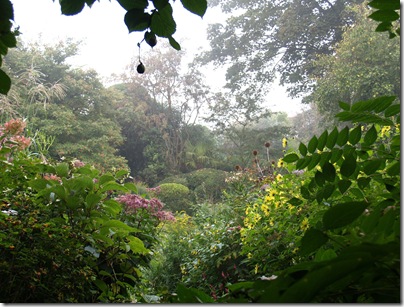 |
| SEPTEMBER |
From a standing point below the Davidia involucrata. On the right, the foliage of Decaisnea fargesii, the yellow ‘sunflowers’ of Helianthus ‘Lemon Queen’ and the white globe thistle Echinops sphaerocephalus ‘Artic Glow’. On the left, Hydrangea paniculata, Miscanthus sinensis and Eupatorium purpureum. Above the pruned Buxus, Ilex and Ligustrum, the hardy palm Trachycarpus fortunei.
 |
| LATE DECEMBER |
The frosted topiary of Syringa and in the background Ilex aquifolium. Older holly trees (male) often have messy branches. The motto I live by is ‘make a minus in to a double plus’, so I regularly prune the Ilex’s corolla while leaving the hanging branches intact. Through this method, an image of a dark green hill with a waterfall of liana is created, which is emblematic for the tropical ambiance in this temperate climate.
 |
| DECEMBER |
The topiary creates a landscape full of scaled hillsides and green valleys. On the left the corolla of Trachycarpus fortunei. Malus ‘Red Sentinel’ and Mahonia x media.
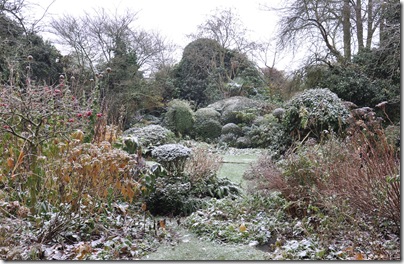 |
| DECEMBER |
A thin layer of snow covers the garden, leaving only the contours and colors of the vegetation visible. On the left the red berries of Viburnum opulus ‘Compactum’.
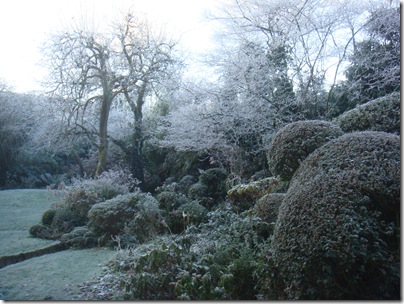 |
| DECEMBER |
The frosted topiary of Buxus and Ligustrum. On the left the deepened paths in the grass.
 |
| LATE DECEMBER |
Frosted Rhododendron and Hydrangea serrata and on the left the trunks Acer pseudoplatanoides.
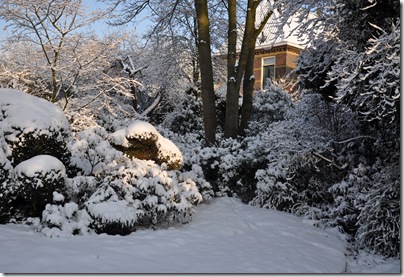 |
| DECEMBER |
A thick blanket of snow covers the Hidden City Garden.
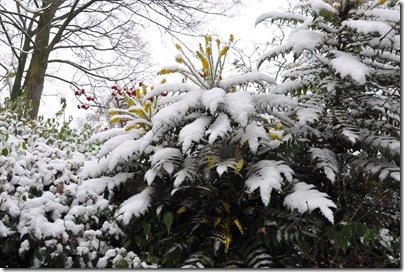 |
| DECEMBER |
| Malus ‘Red Sentinel’ and Mahonia x media. |
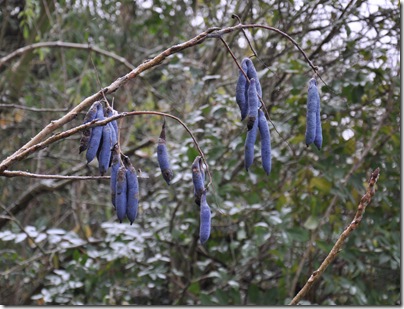 |
| DECEMBER |
| Decaisnea fargesii |
Due to the characteristic shape and color of the pods, this tree is known as ‘dead man’s fingers’.
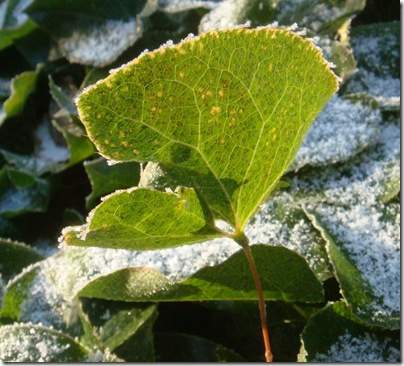 |
| DECEMBER |
| Frosted leaves of Epimedium x peralchicum ‘Frohnleiten’ |
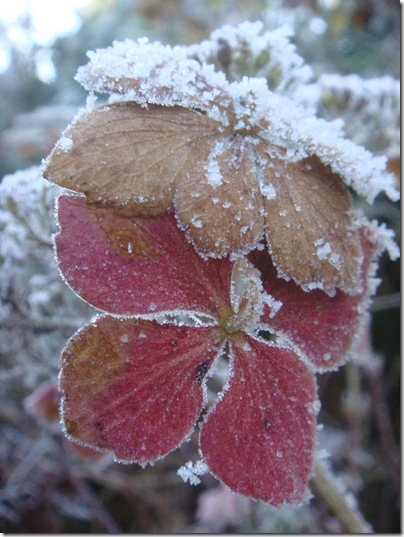 |
| DECEMBER |
| Frosted florets of Hydrangea serrata |
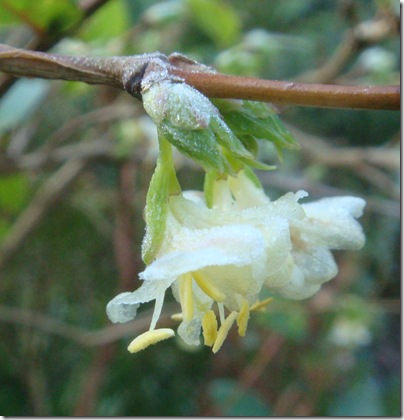 |
| DECEMBER |
| Lonicera fragrantissima |
Their fragrant flowers bloom from November until March. I use this evergreen shrub in many of my designs. Planted next to a front door or a passage, you’ll smell a whiff of Spring in Winter.
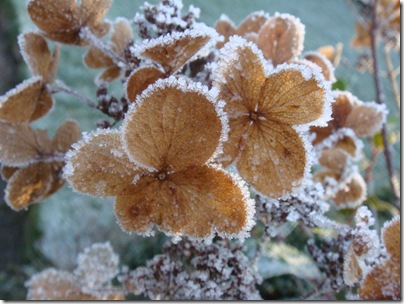 |
| DECEMBER |
| Hydrangea paniculata ‘Burgundy Lace’ with frosted florets. |
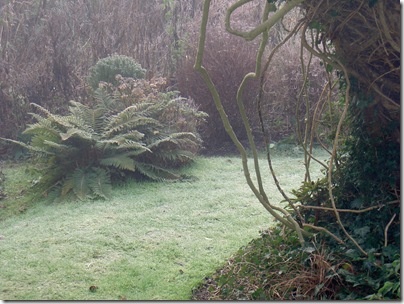 |
| DECEMBER |
| On the left the evergreen fern Polystichum polyblepharum. |
On the right a tree covered with ivy with the winter border in the background. When you strip the leaves off of branch of ivy, you easily create liana.
 |
| LATE DECEMBER |
Deepened path cross the grass in flowing lines. On the upper left a small grass hill.
 |
| LATE DECEMBER |
On the left the evergreen fern Polystichum setiferum ‘Bevis’. To create a tropical touch, I have stapled Polypodium vulgare , using a bit of nylon stocking and soil, to the old apple tree on the forefront, thus making the Polypodium epiphytic.
Soon I’ll be showing you some early Spring flowers. The snowdrop season is coming.
Please note: Portrait of Harry courtesy of Modeste Herwig
